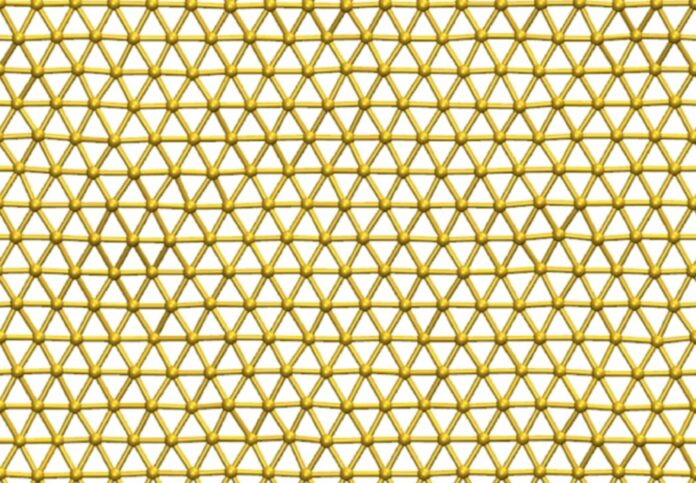Scientists Create ‘Goldene’, a Potentially Ground-Breaking New Material

Scientists have created a material called “goldene,” which is a super thin form of gold. The innovation followed the creation of graphene, a material made of only one layer of graphite atoms. Graphene is very strong and conducts heat and electricity better than copper.
Goldene works the same way as graphene. Researchers spread out gold so it’s only one atom thick. Like graphene, this process gives goldene new properties that could lead to big discoveries, as reported by The Independent.
Helpful in converting carbon dioxide to purifying water
Experts believe the new material could be handy in various tasks like turning carbon dioxide into something else, cleaning water, and improving communication gadgets. Scientists are also hopeful that the new material will enable the production of goods and technology with significantly less gold.
Researchers think gold might just be the beginning. They are keen to discover whether the same can be done with other metals.
“If you make a material extremely thin, something extraordinary happens – as with graphene. The same thing happens with gold,” said Shun Kashiwaya, a researcher at the Materials Design Division at Linköping University.
“As you know, gold is usually a metal, but if single-atom-layer thick, the gold can become a semiconductor instead.”
For years, scientists tried to make thin gold like this, but they kept running into a problem: the metal would stick together. Inspired by Japanese artisans, they finally figured it out by using a technique that has existed for about one hundred years.
Gold embedded between layers of titanium and carbon
Researchers found the new material by accident while searching for something else. It turns out that gold works best when it’s sandwiched between layers of titanium and carbon in a base material.
“We had created the base material with completely different applications in mind. We started with electrically conductive ceramics called titanium silicon carbide, where silicon is in thin layers,” said Lars Hultman, professor of thin film physics at Linköping University.
“Then the idea was to coat the material with gold to make a contact. But when we exposed the component to high temperature, the silicon layer was replaced by gold inside the base material.”
Researchers had the new material, created through a process called intercalation, for a while. But they could not separate the gold from it.
So, they borrowed a technique from Japanese smiths, known as Murakami’s reagent. This method removes carbon from a material, often used to change the color of steel. Researchers tweaked the recipe to extract the gold.
